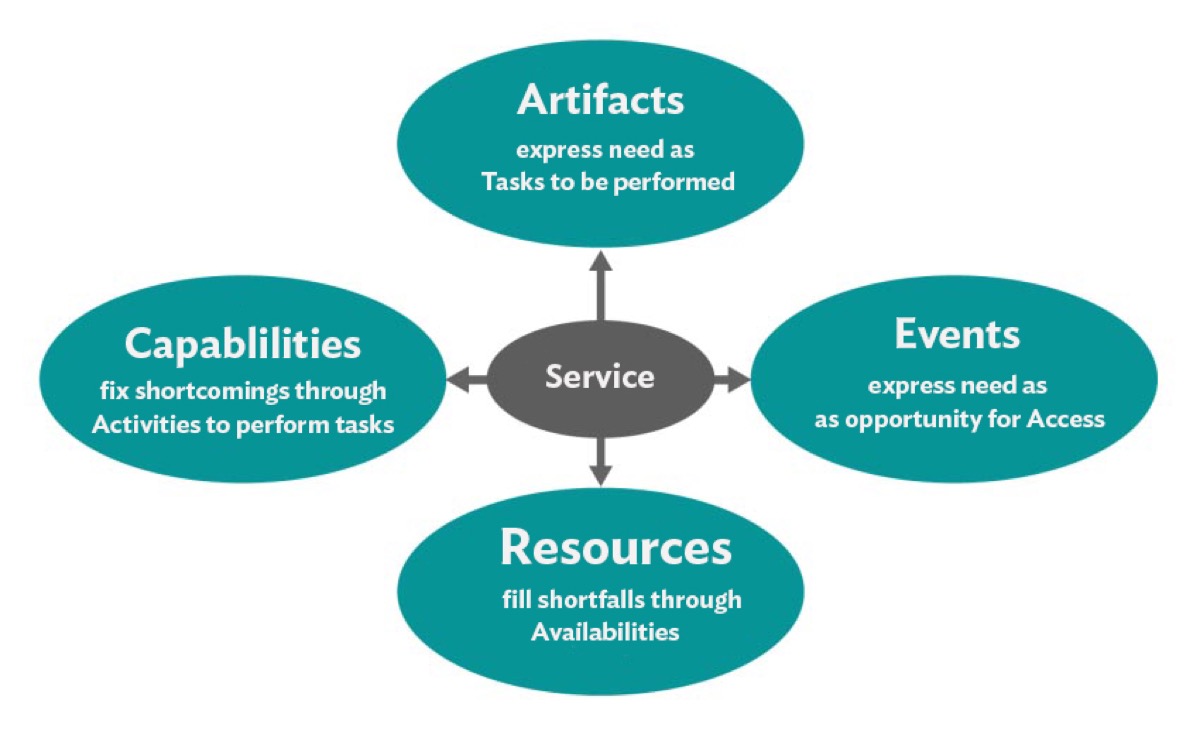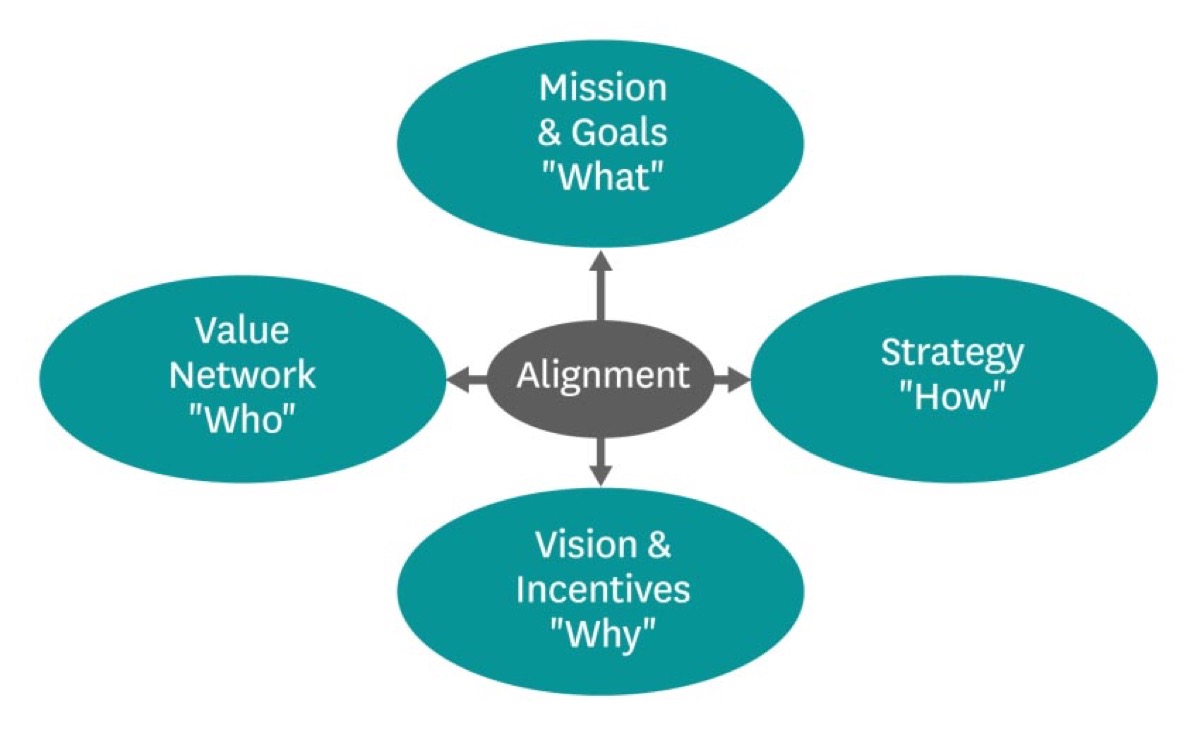The Language of Services
a 4x4 model to navigate rough terrain
When we consider each of the four components of a service from the vantage of these four dimensions, what emerges is complete vocabulary for the language of services.
This taxonomy gives us the structure to complete an interlocking grid of service stories which serves as the basis for service agreements to form valid contracts.
Service Discovery is putting together the puzzle of who, what, how and why resources are afforded (budgeted) and the interaction with performances that supply outcomes.


We’ll drill down into a methodology to apply this vocabulary in the next section, The Art of Service Discovery, but suffice it to say, if you don’t take the language seriously, you’re unlikely to find your virtual survey pins later, when you need to know the system boundaries.
Markus Spiske — "Car charger"
Alex Conrath — "Niagra Falls"

Let's agree to define productivity in terms of throughput. We can debate the meaning of productivity in terms of additional measurements of the business value of delivered work, but as Eliyahu Goldratt pointed out in his critique of the Balanced Scorecard, there is a virtue in simplicity. Throughput doesn’t answer all our questions about business value, but it is a sufficient metric for the context of evaluating the relationship of practices with productivity.